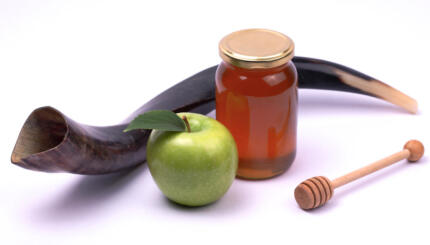Reprinted from Jewish Women: A Comprehensive Historical Encyclopedia with permission of the author and the Jewish Women’s Archive.
In the preface to her book Derakhai Siparti (I Declared My Way), Rahel Yanait Ben-Zvi recalls her life’s work in the spheres of agriculture, the Labor Movement, the Haganah and the Yishuv. Above all she relates to the formative influence of journeying to and fro in the Land of Israel in different phases of her life–the Second Aliyah, the period of struggle and the Arab Revolt during the Mandate (1936–1939), the first years of the new state of Israel, her service as the First Lady of Israel’s Presidency and her visits to the ma’abarot (transit camps built for new immigrants).
Early Life
Rahel Yanait Ben-Zvi (née Golda Lishansky) was born during the Shavuot festival into a warm Hasidic family in the shtetl of Malin in the Ukraine. Her parents, Meir Yonah (1862–1942) and Shoshanah (1865–1944) had three additional daughters: Sarah Lishansky, Tamar (1892–1983) and Batia Lichansky.
As a girl she experienced both the close-knit lifestyle of the traditional Jewish shtetl and the ever-present fear of the pogroms. She lived in her grandparents’ home, exposed to her grandfather’s sad yearning for Jerusalem and her grandmother’s “ancient legends and Hasidic fables and many stories of Erez Israel.”
At the age of fifteen, eager to learn, she moved on her own to Zhitomir to work and study at the Gymnasium. There she developed both her love for botany and her involvement in Zionist youth circles.
Already at the age of nineteen she represented Malin at the Zionist Congress of 1905 held in Basel, Switzerland. In 1906, in Poltava, she was among the founders of the Po’alei Zion socialist party and later became one of its few active women members and leaders in Palestine. The suffering and despair which were the lot of Eastern European Jewry moved her, together with other daring young men and women, to revolt against life in exile. Golda Lishansky immigrated to Palestine in 1908.
New Name, New Home
From the moment she arrived she had a feeling of déjà-vu, that she had been born here and belonged to Erez Israel. There she Hebraicized her name to Rahel Yanait. This symbolic act, deriving from her admiration for King Alexander Yannai (c. 126–76 b. c. e.) who enlarged the boundaries of Israel in the Second Temple era, also honored her father Jonah. Usually she was called Haverah (comrade) Rahel.
She settled in Jerusalem during the period of the Second Aliyah (the second wave of Zionist-oriented immigration to Palestine, 1904–1914), a formative period of the Yishuv (the Jewish community in Palestine). She was one of the first Second Aliyah immigrants who opted to settle in the city, where she became a founder of and teacher at the Hebrew Gymnasium (1908). In 1909 she participated in the founding meeting of the Jewish self-defense organization Ha-Shomer in Meshah (Kefar Tavor) and was accepted as a member of this prestigious group.
Believing that she had to prepare herself professionally to promote agricultural settlement in Erez Israel, Yanait traveled to France to study agricultural engineering at the University of Nancy (1911–1914). After graduating during World War I she returned to Palestine, where she specialized at Aharon Aaronsohn’s experimental station in Atlit, served in recruiting volunteers to the British army and, so she maintained, coordinating between Ha-Shomer and Nili (a group of Jews in Ottoman-occupied Palestine who worked for British intelligence).
After the war she married her partner Izhak Ben-Zvi (1918) and gave birth to two sons: Amram (b. 1922) and Eli (b. 1924), who was murdered by Arabs near his kibbutz in the Galilee in 1948.
Political Involvement
Yanait was not a professed feminist. Looking back she stressed that she never had a special interest in “suffragism.” She believed that talented women could rise to outstanding achievements and that they should demand equal work opportunity, equal remuneration and the opportunity to learn a profession or vocation, but not through a suffragist movement. The fact that on repeated occasions since her youth in the shtetl she was the first and only woman in many frameworks seemed natural to her and not a source of pride.
One example of her attitude in the matter of gender and equality of women in Israel was her total support in the 1950s of recruiting women to the Israel Defence Forces: “Our position, mine and that of Ben-Zvi, persisting from the times of Ha-Shomer and the Haganah, was that it is essential to include the girls, and even to expand their roles in the army. This was our shared position since the beginning of our way in the Labor Movement”.
Yanait was among the founders and molders of the early Labor Movement in Palestine/Israel, its socialist ideology, method and institutions. She was a member of Po’alei Zion, the Ahdut Ha’avodah Party and the General Histadrut (Federation of Labor in Erez Israel).
 In 1925–1927 she inspired the establishment of the Zionist Pioneer Women of America and Canada, a sister organization to the Council of Women Workers in Palestine, and organized the Women’s League for Palestine in the United States to build houses for pioneer women in Palestine.
In 1925–1927 she inspired the establishment of the Zionist Pioneer Women of America and Canada, a sister organization to the Council of Women Workers in Palestine, and organized the Women’s League for Palestine in the United States to build houses for pioneer women in Palestine.
She became a central active member of the Haganah (a voluntary Jewish self-defense organization that operated against Arab attacks during the British Mandate and was the precursor of the Israel Defence Forces). As one of the heads of the Haganah in Jerusalem, she was involved in the infamous assassination in 1924 of Jacob Israel de Haan (1881–1924), pictured, who opposed the Zionist Movement. Active in women’s organizations, she participated in Mo’ezet Ha-Po’alot (The Council of Women Workers). In 1920 she opened a tree nursery in Jerusalem which evolved into a women’s collective.
At the Third Women Workers’ Convention in 1926 Rahel Yanait read a letter from “Oriental comrades” (Mizrahim) complaining about the lack of Histadrut activity among their ranks. In 1928 she received the support of the Convention to establish the Working Women’s Farm (Meshek ha-Po’alot), a training facility in Talpiot, south Jerusalem. Due to the need for the absorption of refugees from Nazi Germany in 1933, this was transformed into Havat ha-Limmud le-Ne’arot (training farm for girls) and subsequently admission was permitted also for boys. After the 1948 War of Independence she established the Agricultural Youth Village for immigrants in the abandoned Arab village of Ein Kerem near Jerusalem.
First Lady of the State of Israel
When her husband began his tenure as the second president of the State of Israel (1952–1963) she took an active role as First Lady. This included the design of the unique character of the President’s House, its easy accessibility and its special status among the new immigrants of multiple ethnic groups who had recently immigrated to Israel from many diasporas.
After the death of Izhak she initiated the establishment of Yad Ben-Zvi, an institution dedicated to research and publication of studies on the history of Erez Israel and on the ethnic heritage of the Sephardi and Eastern Jews, as well as to bringing the fruits of scholarship to the people via seminars, conferences and field trips.
 In the 1960s and 1970s Yanait dedicated her efforts to renewal of the ancient Jewish settlement at Peki’in in the Galilee and promotion of the ideology of Erez Israel ha-Shlemah (The Greater Land of Israel Movement). In recognition of her contribution to the country and its society she was awarded the Henrietta Szold Prize (1958), honorary citizenship of Jerusalem (1965) and the most prestigious award in Israel, the Israel Prize (for lifetime achievement, 1978).
In the 1960s and 1970s Yanait dedicated her efforts to renewal of the ancient Jewish settlement at Peki’in in the Galilee and promotion of the ideology of Erez Israel ha-Shlemah (The Greater Land of Israel Movement). In recognition of her contribution to the country and its society she was awarded the Henrietta Szold Prize (1958), honorary citizenship of Jerusalem (1965) and the most prestigious award in Israel, the Israel Prize (for lifetime achievement, 1978).
Rahel Yanait Ben-Zvi was a central figure and one of the leading women activists of the Jewish Yishuv in Palestine and in the State of Israel. She was a prolific writer, who authored ten books, participated in the editing of six more, and published over five hundred articles and notes.
Her personal biography parallels and reflects a critical period in the modern history of the Jewish people–“an account of the fateful change in Jewish history with which her life was intertwined–the pioneering effort which led to the state of Israel” (Coming Home). Her life story is one of the shaping of ideology and realization of the New Yishuv, its character and its accomplishments. In addition, it reflects the perception, status and contribution of Jewish women in Palestine/Israel, balancing the androcentric Israeli pioneering ethos.
Aharon
Pronounced: ah-ha-RONE, Origin: Hebrew, Aaron in the Torah, brother of Moses.
Hasidic
Pronounced: khah-SID-ik, Origin: Hebrew, a stream within ultra-Orthodox Judaism that grew out of an 18th-century mystical revival movement.
kibbutz
Pronounced: ki (short i)-BOOTZ (oo as in book), Origin: Hebrew, a collectively owned and run community in Israel.
Shavuot
Pronounced: shah-voo-OTE (oo as in boot), also shah-VOO-us, Origin: Hebrew, the holiday celebrating the giving of the Torah at Mount Sinai, falls in the Hebrew month Sivan, which usually coincides with May or June.
shtetl
Pronounced: shTETTull, Origin: Yiddish, a small town or village with a large Jewish population existing in Eastern or Central Europe in the 19th and early-to-mid 20th century.


